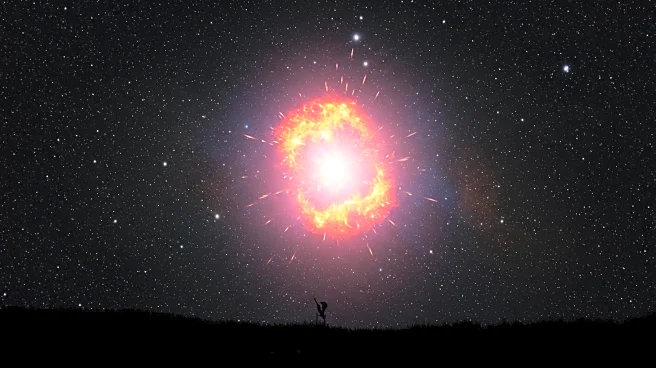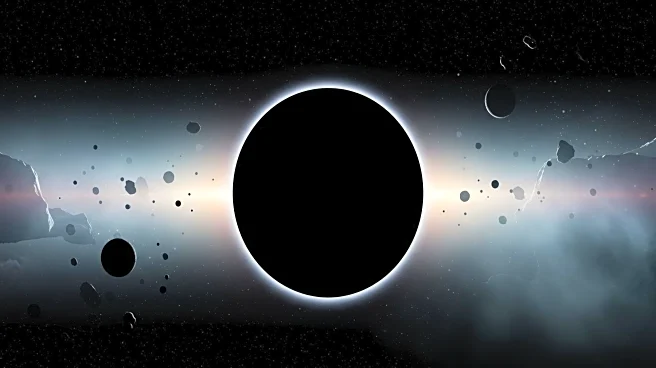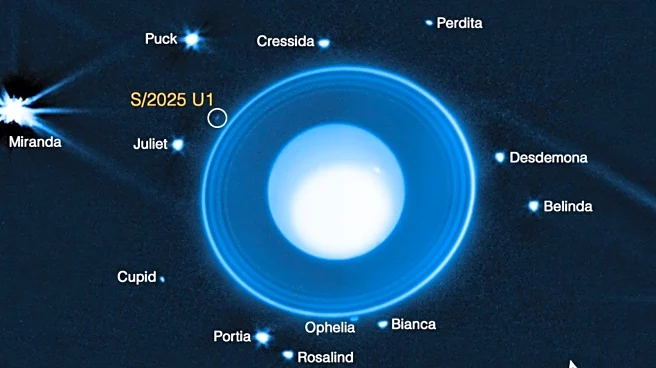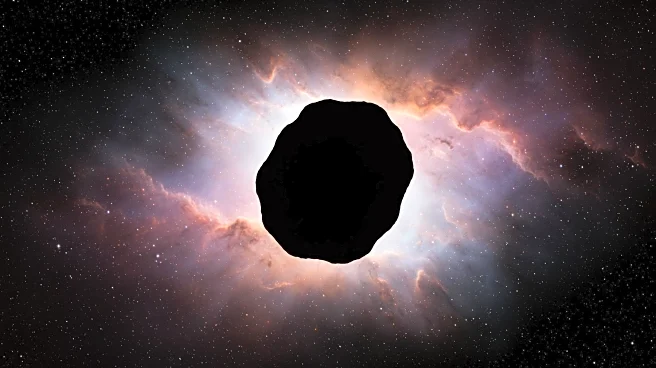What's Happening?
Astronomers, led by Amir Siraj from Princeton University, have proposed the existence of a hypothetical planet, tentatively named 'Planet Y,' which may be orbiting far beyond Neptune. This potential planet is believed to be smaller than Earth but larger than Mercury, orbiting 100 to 200 times farther from the Sun than Earth. The hypothesis arises from observed warping effects in the orbits of some Kuiper belt objects, a distant region filled with icy remnants, including Pluto. The warping suggests that an undiscovered inclined planet could be influencing these orbits. The idea of hidden planets is not new, with past speculations about Planet X and the still-viable Planet Nine. However, Planet Y is distinct in its proposed location and gravitational influence, potentially explaining the tilt in the Kuiper belt's average plane.
Why It's Important?
The potential discovery of Planet Y could significantly enhance our understanding of the solar system's structure and dynamics. If confirmed, it would reshape current models of planetary formation and migration, suggesting that planets could have been scattered outward early in the solar system's history. This discovery could also provide insights into the gravitational forces shaping the Kuiper belt, a region that remains one of astronomy's greatest frontiers. The existence of such a planet could have implications for the study of other solar systems, offering a new perspective on how planets can influence distant celestial bodies. The research underscores the importance of continued exploration and observation in the outer solar system, which could lead to groundbreaking discoveries.
What's Next?
The search for Planet Y is expected to intensify with the upcoming survey by the Vera C. Rubin Observatory, which will map the night sky in unprecedented detail over the next decade. This facility could potentially spot Planet Y directly or confirm its gravitational effects through indirect observations. The survey is anticipated to rapidly expand the catalog of well-measured trans-Neptunian objects, providing more data to support or refute the existence of Planet Y. If the planet exists, it may be detected within the first few years of the survey, either through direct observation or by gathering stronger evidence of its influence on the Kuiper belt.
Beyond the Headlines
The hypothesis of Planet Y highlights the ongoing quest to understand the outer reaches of our solar system. It reflects the broader scientific endeavor to uncover hidden aspects of the cosmos, driven by subtle irregularities in observed data. The potential discovery of such a planet would not only add to the list of known celestial bodies but also challenge existing theories about planetary formation and migration. It underscores the dynamic and ever-evolving nature of astronomical research, where new technologies and methodologies continually push the boundaries of what is known.












